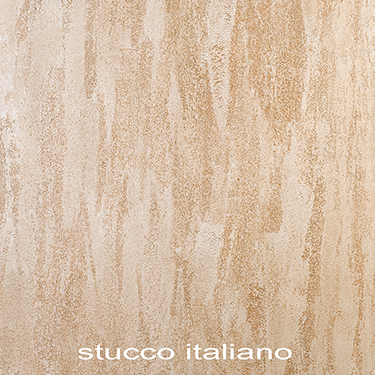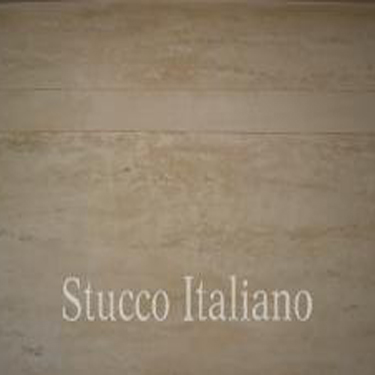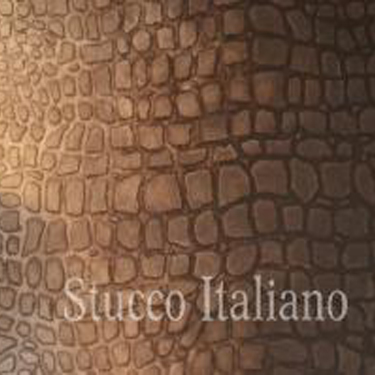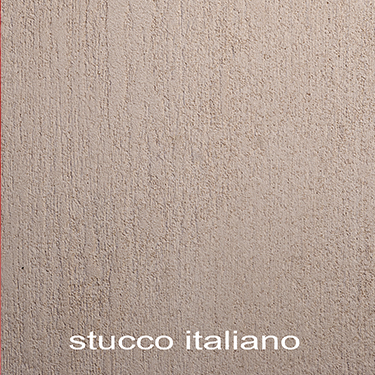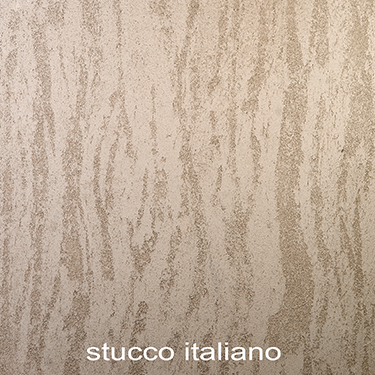Travertino
Overview
It’s rough-looking, but smooth to the touch, with pleasing natural shadows. It’s reminiscent of the antique Roman marble, Travertine.
It can be applied in a more modern, easier way to get the Tuscany Travertine effect, but it is the base material for other finishes like the "Crocodile and reptile skin"
The product is white and can be tinted with our Color System.
Details
During application, remember to always have strong illumination angled at the surface of the wall you are working on. If there is a window, put the light source on the same side as the window to have all the light coming from one side. If the lamp produces a lot of heat, it’s best to move the lamp once in a while so that during the second and third coats, one part doesn’t dry too quickly. It is best not to apply in temperatures below 5°C or with elevated humidity.
- Apply one thin coat uniformly with a metal trowel in the desired colour over the entire surface. Avoid leaving too many ridges. After the first coat, it’s best to replace all the masking tape around doors, windows and ceilings.
- Once the first coat is completely dry, you can apply the second coat with a metal trowel. The edge of the blade should be smooth and free of imperfections. Normally the second coat is applied over the entire surface before applying the final coat, but if the wall is big or it is very warm out, it is recommended that the work be done in a team with one completing the second coat, while the other begins applying the final coat since the third coat needs to be applied on a damp 2nd coat.
- When the material has been applied well and smoothed almost like a marmorino, you can begin to “scrape” the surface using a spatula or the blade of the trowel set at a 90 degree angle in respect to the wall. Move the blade against the plaster with horizontal (or vertical) movements.
- Go over the entire scraped surface to smooth it out again (as usual moving parallel, that is, with the “grain”.) After this, check to see if any areas need to be re-scraped at any points.
If want the smooth parts a bit polished, you can polish them with a metal trowel and then with a plastic one.
Application - Variations
Travertino Finish, alternative application
Apply the second coat and then, at the right time. (You’ll understand exactly when by trying it out.) Move a dry sponge trowel over the surface with horizontal (or vertical) movements.
Each movement should be parallel to the previous one. The trowel shouldn’t be held flat, but at a 45-degree angle to the wall so you are using the edge of the sponge. In this way, you form parallel lines.
Wait until this has dried a bit and then flatten these lines with the light pressure of a metal trowel. This flattening movement should always be parallel to the lines you have made.
Then you can go over it with a metal trowel and a plastic trowel to polish the smooth surfaces.
You can also use our brush trowel on the surface and then scrape it with the spatula and press with the trowel.
Variations
Variations are possible adding our additive Mica to get sparkling flakes into the plaster finish or adding the Salt and Pepper additive to get black dots which give more of a "sense of stone " to the finish.
Maintenance of Stucco TRAVERTINO
Wait 48 hours before applying protection.
1. You can apply our natural bees’ wax tinted the same color as the Travertino. This protection should only be done on interiors.
2a. You can apply our natural bees’ wax (for interiors) tinted with a colour which contrasts with the Travertine. This will accentuate the contrast between the smooth and rough parts.
2b.This can also be done by applying a non-coloured coat of our Normal Primer diluting 1 part with 11-12 parts of water. This is fine for exteriors.
Then, when it is dry, apply a second coat with the same dilution, but with colour this time. Be careful to remove excess colorant from the smooth parts with a rag. This finish gives protection while at the same time accentuates the Travertine effect. This operation can be repeated once more, with a different darker colour, to get a dramatic effect. All this can be done on interiors and exteriors.
3. You can apply our water-based water repellent. This is done by going over the surface a couple times using a spray bottle and distributing any excess using a cloth that doesn’t leave fibers.
It’s important to be sure to spray a light amount of water repellent being careful not to wet the surface too much. This can be done on interior and exterior finishes.
Media
-

Travertino Tuscano
6697 Views
-

Travertino Romano Sample 2
7006 Views
-

Travertino Romano Sample
6882 Views

